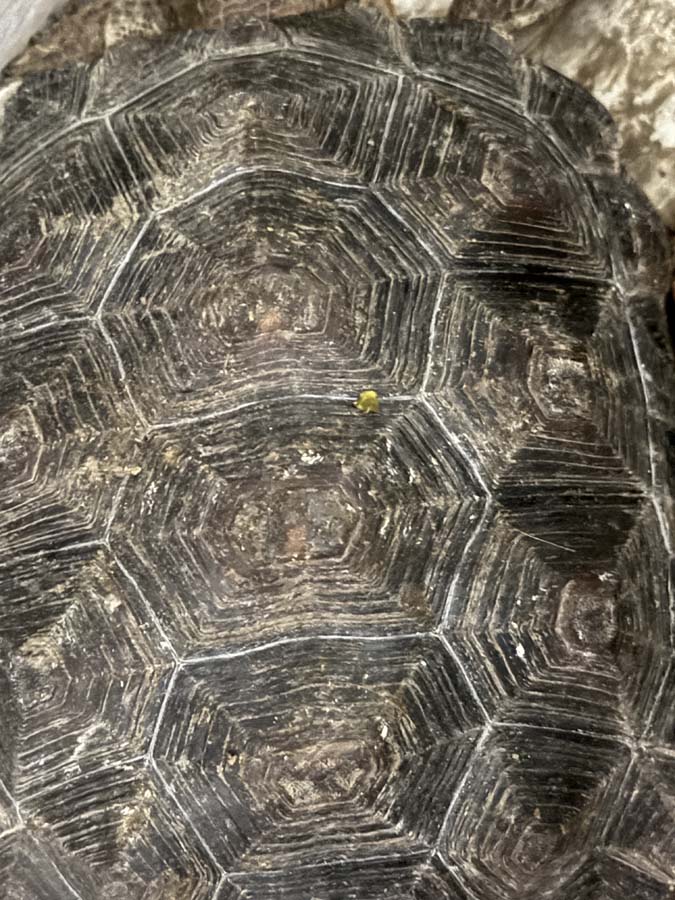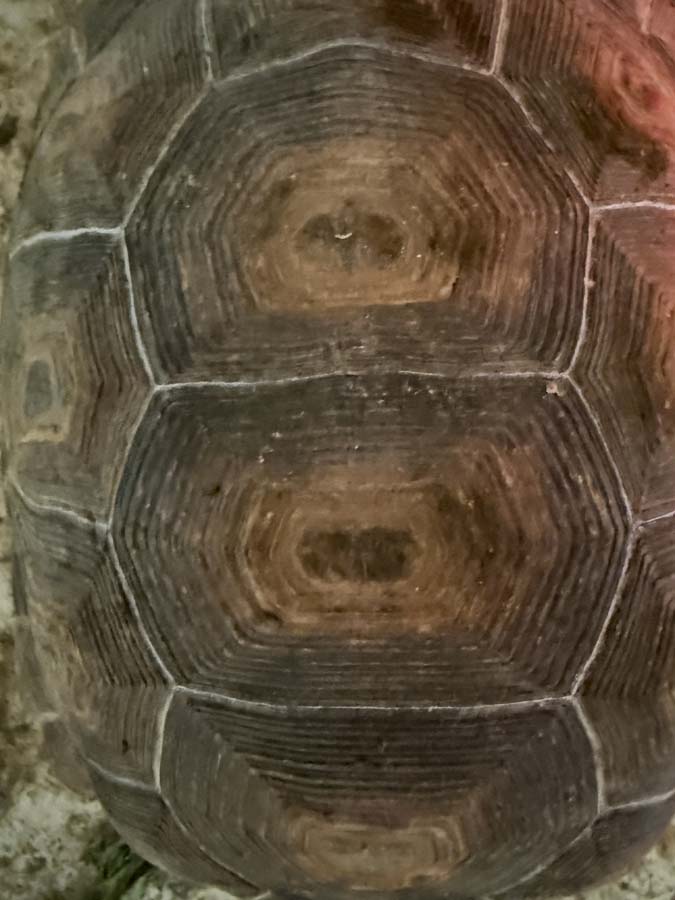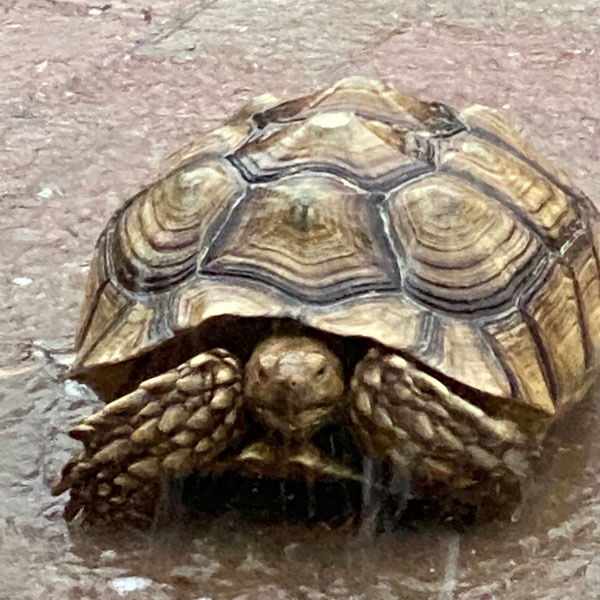If you’ve read my book, Don’t Call Me Turtle, or are familiar with how tortoises grow, you know they deposit more keratin between the scutes (the segments of the upper shell, or carapace). Keratin is the same protein that makes up your skin, hair, and nails. This deposition of keratin creates a pattern on the shell similar to tree rings. I’ve often noticed that in “good years,” with plenty of food, the bands look much larger than in others.
The Promise and Problem of Ring Counting
One of the questions I’m frequently asked is: Can you determine the age of a tortoise by counting these rings?
Since the rings are created continuously throughout the tortoise’s life, it seems like a straightforward way to determine their age. However, researchers have found that counting rings is only reliable for determining a tortoise’s age as long as they are five years or younger. Most juvenile tortoises do have a one-ring-per-year deposition.

Once a tortoise reaches sexual maturity, ring counts become much less reliable for a few reasons:
- Variable Growth: Tortoises often have long periods of low activity, followed by periods of abundant food and optimum conditions that cause rapid growth. Diet and environment significantly affect ring formation and visibility.
- Wear and Tear: The scutes on a tortoise’s shell suffer wear and tear from everyday living. Rings wear down and become less distinct, especially in older individuals.
- Slower Growth in Old Age: Older tortoises may no longer produce one ring per year, slowing down their keratin production.
- Shedding Scutes: Some tortoise species can shed their scutes completely, much like turtles, which removes the growth rings entirely, making the method useless. For example, some sources allege that Sulcatas shed their scutes. I have two, Duke and Cantata, and I’ve never seen them shed scutes in 15 years—and they have visible rings just like my other tortoises.
Tortoises are not all the same; each has its own growth and keratin production rates. Some remain quite small, like the Russian tortoise, while others grow enormous, like the Galapagos tortoise.

The only way to know a tortoise’s age for certain? Be there when it hatches!
Did you enjoy this peek into the science behind tortoise growth? As an author and retired biologist, I love sharing fun facts about the reptiles and animals I feature in my books, from the Sonoran Desert to The Bahamas! My newest project, an animated film based on my character Curtis Curly-tail, brings the environmental messages of The Bahamas to life!
Be part of Curtis Curly-tail’s animated adventure and help support iguana conservation!
